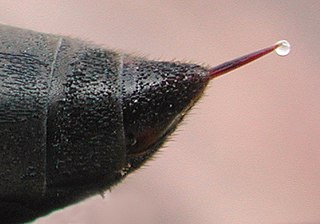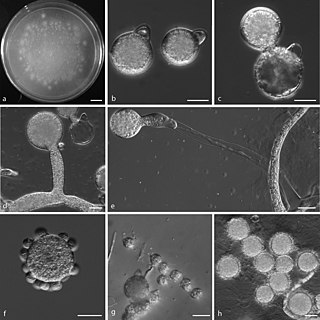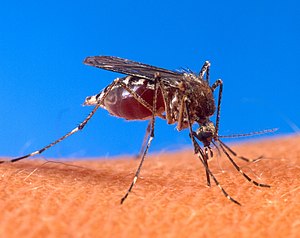
Allergies, also known as allergic diseases, refer to a number of conditions caused by the hypersensitivity of the immune system to typically harmless substances in the environment. These diseases include hay fever, food allergies, atopic dermatitis, allergic asthma, and anaphylaxis. Symptoms may include red eyes, an itchy rash, sneezing, coughing, a runny nose, shortness of breath, or swelling. Note: food intolerances and food poisoning are separate conditions.

Anaphylaxis is a serious, potentially fatal allergic reaction and medical emergency that is rapid in onset and requires immediate medical attention regardless of use of emergency medication on site. It typically causes more than one of the following: an itchy rash, throat closing due to swelling which can obstruct or stop breathing; severe tongue swelling which can also interfere with or stop breathing; shortness of breath, vomiting, lightheadedness, loss of consciousness, low blood pressure, and medical shock. These symptoms typically start in minutes to hours and then increase very rapidly to life-threatening levels. Urgent medical treatment is required to prevent serious harm or death, even if the patient has used an epipen or has taken other medications in response, and even if symptoms appear to be improving.
An antidote is a substance that can counteract a form of poisoning. The term ultimately derives from the Greek term φάρμακον ἀντίδοτον (pharmakon) antidoton, "(medicine) given as a remedy". Antidotes for anticoagulants are sometimes referred to as reversal agents.

A stinger is a sharp organ found in various animals capable of injecting venom, usually by piercing the epidermis of another animal.

Scolopendra heros, commonly known as the giant desert centipede, giant Sonoran centipede, Texas redheaded centipede, and giant redheaded centipede, is a species of North American centipede found in the Southwestern United States and Northern Mexico.

Melittin is the main component and the major pain-producing substance of honeybee venom. Melittin is a basic peptide consisting of 26 amino acids.

An animal bite is a wound, usually a puncture or laceration, caused by the teeth. An animal bite usually results in a break in the skin but also includes contusions from the excessive pressure on body tissue from the bite. The contusions can occur without a break in the skin. Bites can be provoked or unprovoked. Other bite attacks may be apparently unprovoked. Biting is a physical action not only describing an attack but it is a normal response in an animal as it eats, carries objects, softens and prepares food for its young, removes ectoparasites from its body surface, removes plant seeds attached to its fur or hair, scratching itself, and grooming other animals. Animal bites often result in serious infections and mortality. Animal bites not only include injuries from the teeth of reptiles, mammals, but fish, and amphibians. Arthropods can also bite and leave injuries.

The jack jumper ant, also known as the jack jumper, jumping jack, hopper ant, or jumper ant, is a species of venomous ant native to Australia. Most frequently found in Tasmania and southeast mainland Australia, it is a member of the genus Myrmecia, subfamily Myrmeciinae, and was formally described and named by British entomologist Frederick Smith in 1858. This species is known for its ability to jump long distances. These ants are large; workers and males are about the same size: 12 to 14 mm for workers, and 11 to 12 mm for males. The queen measures roughly 14 to 16 mm long and is similar in appearance to workers, whereas males are identifiable by their perceptibly smaller mandibles.

A bee sting is the wound and pain caused by the stinger of a female bee puncturing skin. Bee stings differ from insect bites, with the venom of stinging insects having considerable chemical variation. The reaction of a person to a bee sting may vary according to the bee species. While bee stinger venom is slightly acidic and causes only mild pain in most people, allergic reactions may occur in people with allergies to venom components.
Insect sting allergy is the term commonly given to the allergic response of an animal in response to the bite or sting of an insect. Typically, insects which generate allergic responses are either stinging insects or biting insects. Stinging insects inject venom into their victims, whilst biting insects normally introduce anti-coagulants into their victims.

Conidiobolomycosis is a rare long-term fungal infection that is typically found just under the skin of the nose, sinuses, cheeks and upper lips. It may present with a nose bleed or a blocked or runny nose. Typically there is a firm painless swelling which can slowly extend to the nasal bridge and eyes, sometimes causing facial disfigurement.

An allergic response is a hypersensitive immune reaction to a substance that normally is harmless or would not cause an immune response in everyone. An allergic response may cause harmful symptoms such as itching or inflammation or tissue injury.

A centipede bite is an injury resulting from the action of a centipede's forcipules, stinger-like appendages that pierce the skin and inject venom into the wound. Such a wound is not strictly speaking a bite, as the forcipules are a modified first pair of legs rather than true mouthparts. Clinically, the wound is viewed as a cutaneous condition characterized by paired hemorrhagic marks that form a chevron shape caused by the paired forcipules.

Ant venom is any of, or a mixture of, irritants and toxins inflicted by ants. Most ants spray or inject a venom, the main constituent of which is formic acid only in the case of subfamily Formicinae.

Many species of arthropods regularly or occasionally bite or sting human beings. Insect saliva contains anticoagulants and enzymes that cause local irritation and allergic reactions. Insect venoms can be delivered by their stingers, which often are modified ovipositors, or by their mouthparts. Insect, spider and scorpion venom can cause serious injury or death. Dipterans account for the majority of insect bites, while hymenopterans account for the majority of stings. Among arachnids spider bites and mite bites are the most common. Arthropods bite or sting humans for a number of reasons including feeding or defense. Arthropods are major vectors of human disease, with the pathogens typically transmitted by bites and rarely by stings or other contact. Another common negative effect is interference with military activity.
Fiddler's neck is an occupational disease that affects violin and viola players.
Alpha-gal syndrome (AGS) (also Alpha-gal allergy; Mammalian meat allergy (MMA)) — is a type of meat allergy characterized by a delayed onset of symptoms (3–8 hours) after ingesting mammalian meat. The condition results from past exposure to certain tick bites. It was first reported in 2002. Symptoms of the allergy include rash, hives, nausea or vomiting, difficulty breathing, drop in blood pressure, dizziness or faintness and severe stomach pain.

Insects have long been used in medicine, both traditional and modern, sometimes with little evidence of their effectiveness. For the purpose of the article, and in line with custom, medicinal uses of other arthropods such as spiders are included.
The toxicology of fire ant venom is relatively well studied. The venom plays a central role in the biology of Red imported fire ants, such as in capturing prey, and in defending itself from competitors, assailants, and diseases. Some 14 million people are stung annually in the United States, suffering reactions that vary from mild discomfort, to pustule formation, swelling, and in rare cases, systemic reactions followed by anaphylactic shock. Fire ant venoms are mainly composed (>95%) of a complex mixture of insoluble alkaloids added to a watery solution of toxic proteins. For the Red imported fire ant Solenopsis invicta Buren there are currently 46 described proteins, of which four are well-characterised as potent allergens.

Mosquito bite allergies, also termed hypersensitivity to mosquito bites, are excessive reactions of varying severity to mosquito bites.

















